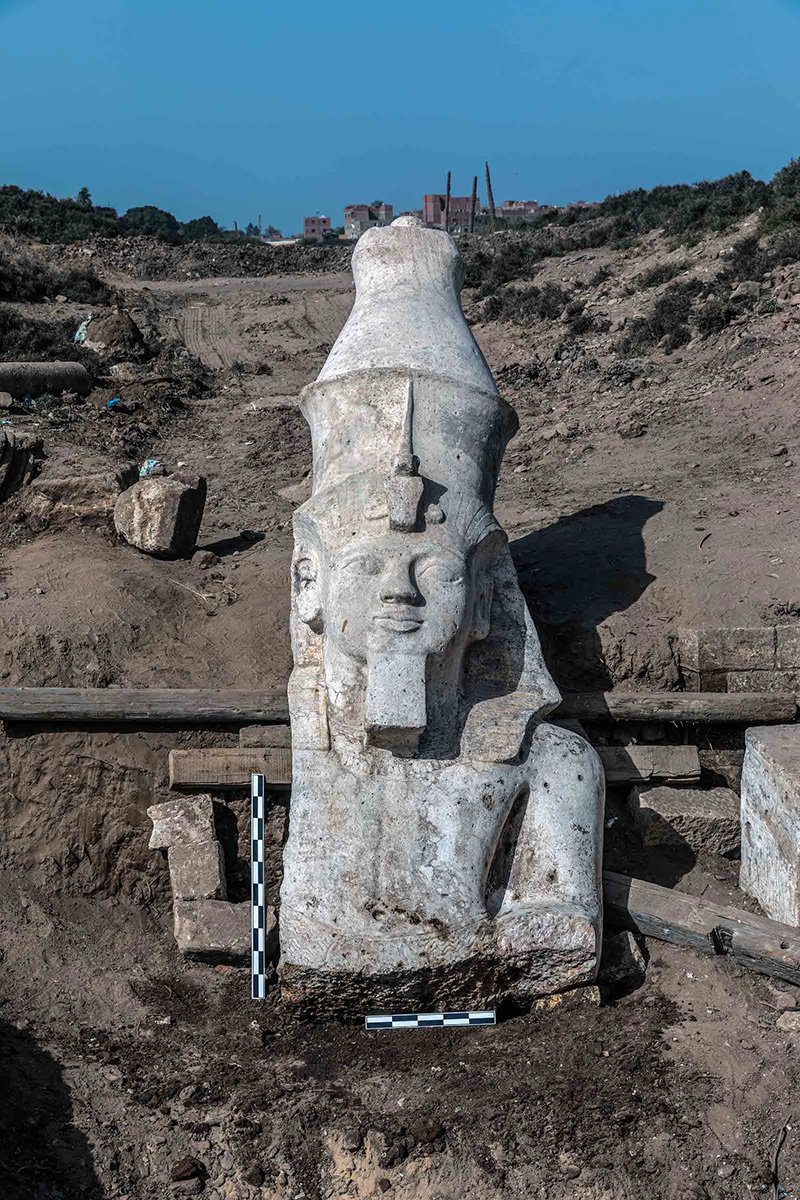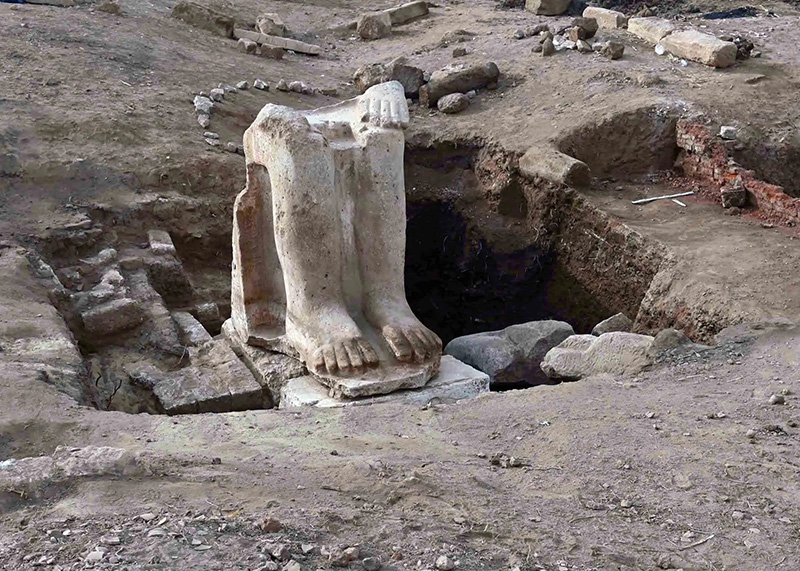
Missing Head of Colossal Ramesses II Statue Discovered
I recently read an article from our friends at Patterns of Evidence who reported on the recent finding of much of the upper half of the colossal Rameses statue, (the base was originally found in 1930). The missing head, partial torso, and left arm of the limestone statue of Rameses were found at the archaeological site of El Ashmunein (Khemnu or Khomeno, as the city was called in Rameses’ time) in middle Egypt.
Rameses II lived for over 90 years and outlived most of his sons. He was succeeded by Merneptah, who was the thirteenth son of Rameses II. Standard Egyptian chronology dates Rameses II to 1303 BC–1213 BC, but in most revised Egyptian chronologies, he lived from 1030–940 BC. He was thus contemporary with Saul, David, and Solomon. However, many biblical archaeologists regard him as the pharaoh of the exodus due to the mention of the city of Raamses (an alternate spelling of Rameses) being built by the Israelites while in captivity (Exodus 1:11).
As the Patterns of Evidence article mentions, this causes secular archaeologists to believe the exodus occurred c. 1250 BC. However, this date creates many problems with the history of Israel and their entrance into Canaan.
Problems arise when realizing that chronological information in the Bible puts the Exodus about 200 years before 1250 BC. More problems arise when seeing that the conditions in Egypt and Canaan at the time of Ramesses II [another alternate spelling of Rameses] do not match the main situations described in the Bible for the Exodus and the conquest of Canaan 40 years later. . . .
Most significantly, in the era of Ramesses II there is no evidence of a massive Semitic population in Egypt’s Nile Delta centered at the site of Ramesses. Neither is there any sign of the major troubles in Egyptian society as would be expected after the calamities of Exodus. Nor is there the destruction of high-walled cities in Canaan as described in the Bible. In fact, some of these specifically-named cities in the Bible have been found to be empty burned out ruins at the time of Ramesses – and they had been that way for centuries before his time. . . .
It is possible that the term Ramesses was associated with the area long before any pharaohs by that name reigned. However, many scholars believe the best explanation is that the Biblical text updated the city’s name at some point after knowledge of the older city had faded away. The Israelites lived in the older version of the site [Goshen/Avaris] before it was rebuilt by Ramesses.
In other words, accepting Rameses II as the pharaoh of the exodus is completely at odds with Scripture and archaeology.
In other words, accepting Rameses II as the pharaoh of the exodus is completely at odds with Scripture and archaeology. This mismatch of dates has caused many to view the exodus as merely a cultural bonding point, semi-mythical or entirely mythical. But we know that all Scripture is true (Proverbs 30:5; John 17:17) and is breathed out by God (2 Timothy 3:16). And as the Patterns of Evidence: Exodus DVD shows, the conventional dates are incorrect, and when adjusted correctly to account for overlapping dynasties, the biblical events line up with true history.
While this find is exciting and solves a 94-year-old mystery of the “missing head,” I’m sure that we’ll hear more “news” on how the exodus, if Egyptologists believe it occurred, came during the reign of Rameses II. But this is at odds with the biblical account of the wilderness wandering, the Israelite’s entrance into Canaan, and the conquest of many of the Canaanite cites as recorded in Exodus through Deuteronomy. But we do not trust in man’s word. Instead, we agree with the Apostle Paul when he said, “Let God be true but every man a liar” (Romans 3:4 NKJV). Many times, man’s interpretation of archaeology has been shown to be wrong, but the biblical account of history has been verified by archaeology over and over again.
Thanks for stopping by and thanks for praying,
Ken
This item was written with the assistance of AiG’s research team.

Answers in Genesis is an apologetics ministry, dedicated to helping Christians defend their faith and proclaim the good news of Jesus Christ.
- Customer Service 800.778.3390
- Available Monday–Friday | 9 AM–5 PM ET
- © 2025 Answers in Genesis


